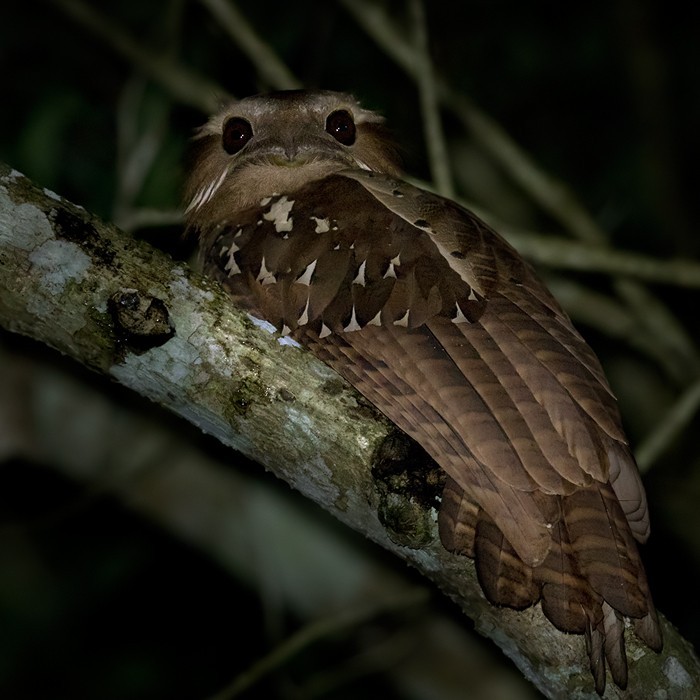Large Frogmouth
A species of Lesser Frogmouths Scientific name : Batrachostomus auritus Genus : Lesser Frogmouths
Large Frogmouth, A species of Lesser Frogmouths
Botanical name: Batrachostomus auritus
Genus: Lesser Frogmouths
Content
Description General Info
 Photo By Lars Petersson
Photo By Lars Petersson Description
The large frogmouth is considerably larger than other members of its genus and grows to a length of about 42 cm (17 in). The sexes are similar and the colouring is rather variable, the upper parts being mainly chestnut and blackish-brown, barred and spotted with white and buff. The underparts are dull brown or pale rufous, the belly being paler than the breast. The beak is horn-coloured with a darker tip, the gape being yellow, the irises are some shade of light or dark brown, and the legs are a dull yellow. 
Size
43 cm
Nest Placement
Tree
Feeding Habits
Large Frogmouth primarily consumes insects such as cicadas and grasshoppers, capturing its prey through sallying from branches or the ground.
Habitat
The habitat of large Frogmouth predominantly comprises lowland rainforests, including both secondary growth areas and pristine primary forests. Additionally, these birds inhabit forested swamps and regions with alluvial soils, indicating a preference for dense, moist, and wooded environments.
Dite type
Insectivorous
General Info
Feeding Habits
Bird food type
Distribution Area
The species occurs in Thailand, Malaysia, Indonesia and Brunei. Its range extends from southern Thailand, through Sabah, Sarawak and peninsular Malaysia to Kalimantan, Sumatra, Indonesia and Brunei. Its habitat is primary lowland forest, but it is also found in secondary forest and in areas of regenerating growth. It is found at elevations from sea level to at least 250 m, and perhaps to 1000 m. 
Species Status
B. auritus is uncommon throughout most of its range. The total population is unknown, but the number of birds is likely to be decreasing in parallel with the destruction of lowland tropical forest throughout its range. The International Union for Conservation of Nature has assessed its conservation status as being "near-threatened". 

 Photo By Lars Petersson
Photo By Lars Petersson Scientific Classification
Phylum
Chordates Class
Birds Order
Nightjars and Relatives Family
Frogmouths Genus
Lesser Frogmouths Species
Large Frogmouth